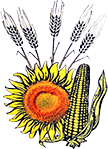ABSTRACT
Organic agriculture is widely considered an agricultural method that aims to produce food products by turning to natural processes and substances, limiting, in the same time, the impact on the environment. In the last period, there has been an evident growing trend in consumers’ preference for organic food products, that determines the agricultural producers and systems to adapt to this demand, by turning to organic agricultural practices. In this context, the aim of this work is to analyse the evolution of the Romanian organic agriculture over a period of 12 years, between 2010-2021, especially regarding the organic cultivated area and crop’s structure, having also in view the global context of the agricultural organic sector. The analysis highlighted an important development of the organic area during this timeframe, based, mainly, on permanent grassland, cereals, industrial crops and “other crops”, at the end of the interval Romania being among the countries with the highest contribution to the increase of the European organic land area.
Keywords: organic agriculture, conventional agriculture, agri-food products.


